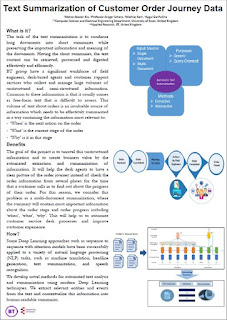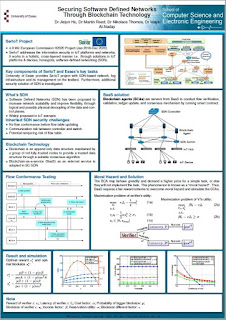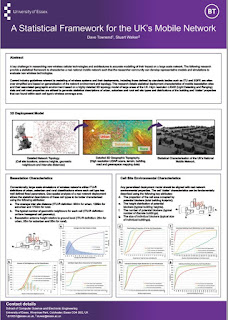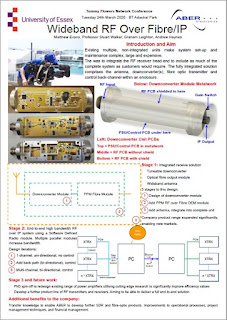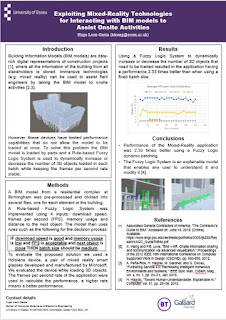 |
Hugo Leon-Garza
University of Essex |
Building Information Modelling is a cooperative process for creating and managing information on a construction project.
As a result of this process, Building Information Models (BIM models) are obtained - these models are data-rich, object-oriented, intelligent, and parametric digital representations containing all the information from all the stakeholders of a facility or building. The elements in the model have properties and relationships which can be exploited by utility companies in planning and maintenance activities.
Being capable of bringing this kind of information to onsite activities is expected to improve the quality of the field engineer’s work.
Augmented Reality (AR), is a Mixed-Reality technology that supplements the reality by superimposing digital information in the user’s view.
Utility companies, such as British Telecom (BT), can use this technology to assist their engineers with all the information related to a location. However, BIM are complex and size heavy data objects, which make it difficult for mobile and wearable hardware with limited performance capabilities, such as augmented reality glasses, to load the complete model.
In this work we show how we could process a BIM model and make use of a Mixed-Reality headset (Microsoft HoloLens), to visualize and interact with the elements. We also propose a Fuzzy Logic approach to load objects to the user’s view by batches in a way that the application performance is minimally affected
